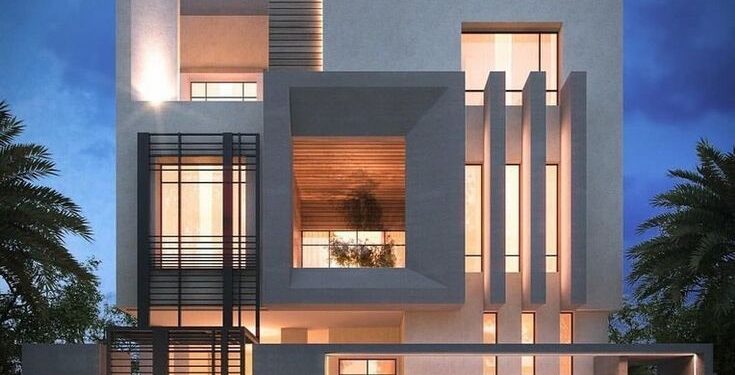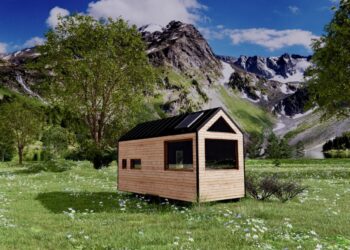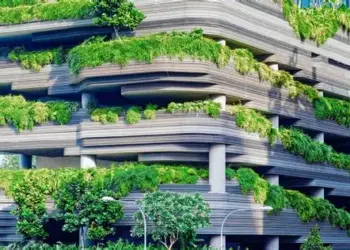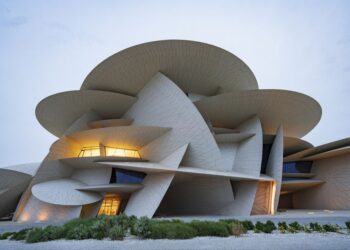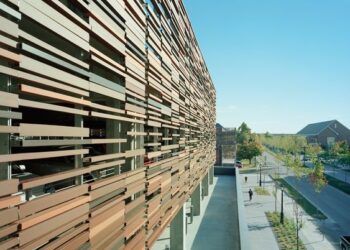The world of architecture is in a constant state of evolution, driven by rapid technological advancements, a heightened awareness of sustainability, and shifting cultural trends. Modern architects are no longer just designers of buildings; they have become visionaries and innovators who balance creativity with practical, environment-friendly solutions. This comprehensive article explores the emerging trends in architectural design, discussing new materials, sustainable practices, and digital innovations that are shaping the industry. Read on to discover how these trends are influencing our cities, public spaces, and the way we interact with built environments.
As urban landscapes expand and technology integrates further into everyday life, architectural design is undergoing a transformative change. Architects and designers face a dual challenge: creating spaces that are both visually captivating and highly functional while ensuring that these designs address environmental concerns and societal needs. This article provides an in-depth analysis of the future of architectural design. We will examine contemporary trends, explore the technology that is driving the innovation, and reveal what the future holds for architecture.
The transformation in architectural design is not only reshaping skylines but also redefining how we live and interact with our surroundings. As we navigate through evolving cultural norms and respond to urgent environmental crises, the field of architecture is integrating innovative strategies that prioritize sustainability, smart design, and digital connectivity. This detailed overview will help you understand the emerging patterns and forward-thinking approaches that are set to redefine the world of design in the coming years.
The Evolution of Architectural Design
Architectural design is more than just creating aesthetically pleasing structures; it is about making a statement on society’s progress. Today’s architecture reflects a complex relationship between form, function, and technology. Here are several key forces driving this evolution:
A. Technological Advancements
Technology is a major catalyst for change in architecture. The use of building information modeling (BIM), virtual reality (VR), and augmented reality (AR) is revolutionizing the planning and construction process. These tools allow architects to create precise models, simulate building performance, and even offer clients virtual tours of projects before construction begins.
-
A.1. Building Information Modeling (BIM):
BIM enables the creation of detailed 3D models that integrate all aspects of a building’s design, from structural integrity to energy efficiency. This holistic approach allows for better coordination among architects, engineers, and contractors. -
A.2. Virtual and Augmented Reality:
VR and AR provide immersive experiences that help stakeholders visualize a project in real time. These technologies allow for interactive modifications during the design phase, ensuring that the final product aligns with the initial vision and client expectations. -
A.3. Artificial Intelligence and Machine Learning:
By incorporating AI, architects can analyze vast amounts of design data to optimize building performance, predict maintenance needs, and even suggest innovative design modifications based on environmental factors.
B. Sustainability and Environmental Responsibility
Sustainability is no longer an afterthought—it is a core element of modern architectural design. Given the alarming rate of climate change and environmental degradation, architects are urgently integrating eco-friendly practices into their projects.
-
B.1. Green Building Materials:
New materials that are recyclable, low-emission, or made from renewable resources are gaining popularity. Innovations such as self-healing concrete, cross-laminated timber (CLT), and bioplastics offer new ways to minimize the environmental footprint of buildings. -
B.2. Energy Efficiency:
Architects are increasingly incorporating energy-saving features into their designs. This includes high-performance insulation, smart windows that optimize natural light, and integrated renewable energy sources like solar panels and wind turbines. -
B.3. Water Conservation:
The trend in sustainable design also includes efficient water management strategies. Rainwater harvesting, water recycling systems, and smart irrigation solutions help reduce water waste and promote conservation.
C. Urban Regeneration and Adaptive Reuse
Rather than demolishing old structures, modern architects are focusing on adaptive reuse—transforming existing buildings into vibrant, functional spaces. This approach not only preserves historical value but also minimizes waste and reduces the demand for new resources.
-
C.1. Revitalizing Historic Buildings:
Adaptive reuse projects breathe new life into old structures by converting them into cultural centers, offices, or even residential units. This preserves the architectural heritage of a city while offering modern amenities. -
C.2. Mixed-Use Developments:
Urban regeneration projects often combine residential, commercial, and recreational spaces in a single development. This mixed-use strategy maximizes land efficiency and builds communities that are dynamic and interactive. -
C.3. Sustainable Urban Planning:
A focus on smart growth and sustainable design principles ensures that urban regeneration projects contribute to a balanced and environmentally conscious cityscape.
Digital Transformation in Architecture
The digital revolution has had a profound impact on the way architects conceptualize, design, and construct buildings. The intersection of architecture with digital technology is fostering new methodologies that push the boundaries of creativity and functionality.
A. Smart Building Systems
Digital technology is making buildings smarter and more responsive to the needs of their occupants. Intelligent systems that control lighting, temperature, security, and energy usage are becoming standard features in modern architecture.
-
A.1. Internet of Things (IoT):
IoT devices can be embedded in building systems to collect real-time data on energy consumption, occupancy, and environmental conditions. This data is then used to optimize building performance and enhance user comfort. -
A.2. Automated Building Management:
Automated systems monitor building functions continuously, providing alerts for maintenance and ensuring operational efficiency. These systems help reduce costs and prevent the degradation of critical infrastructure. -
A.3. Data-Driven Design:
The integration of data analytics into architectural design allows for informed decision-making. Architects use predictive models to assess how design choices will impact energy efficiency and user satisfaction over time.
B. Virtual Collaboration and Remote Design
The COVID-19 pandemic has accelerated the adoption of remote work and virtual collaboration tools in the architecture industry. Cloud-based platforms enable architects and stakeholders to work together seamlessly, regardless of geographic location.
-
B.1. Cloud-Based Software:
Architectural firms now use cloud technology to share design files and collaborate in real time. This eliminates geographical constraints and improves project timelines. -
B.2. Remote Project Management:
Project management software integrated with design tools allows for the smooth execution of complex construction projects. Remote collaboration reduces the need for physical meetings and streamlines the review process. -
B.3. Global Design Communities:
Online platforms and social networks enable architects around the world to exchange ideas and showcase their work, fostering a vibrant global community of innovators.
Innovative Materials and Construction Techniques
New materials and construction methods are revolutionizing the field of architecture. These innovations not only improve the aesthetic and functional qualities of buildings but also offer sustainable alternatives to traditional construction practices.
A. High-Performance Materials
Modern materials are designed to be strong, lightweight, and sustainable. Innovations in material science are producing options that help architects meet the dual goals of efficiency and environmental responsibility.
-
A.1. Self-Healing Concrete:
A type of concrete that can repair its own cracks using embedded microorganisms. This reduces maintenance costs and extends the lifespan of structures. -
A.2. Cross-Laminated Timber (CLT):
An eco-friendly alternative to steel and concrete, CLT offers strength and versatility. It is particularly popular in mid-rise construction for its ease of assembly and minimal environmental impact. -
A.3. Transparent Aluminum:
Also known as aluminum oxynitride, this material provides the strength of metal with the clarity of glass. It is ideal for facades and large structural components that require both durability and aesthetic appeal.
B. 3D Printing and Modular Construction
Advanced manufacturing techniques are shaping the future of construction. 3D printing, in particular, is enabling the rapid production of customized building components, while modular construction methods allow for the efficient assembly of entire structures off-site.
-
B.1. Customized Building Components:
3D printing allows architects to create intricate designs that are both unique and functional. Components can be produced with precision, minimizing waste and reducing construction time. -
B.2. Off-Site Modular Construction:
Prefabricated modules are constructed in controlled environments before being transported to the construction site. This method enhances quality control, reduces construction time, and minimizes environmental disruption. -
B.3. Scalability and Flexibility:
Modular construction techniques offer scalability, allowing for the easy expansion or reconfiguration of buildings as needed. This adaptability is crucial in rapidly growing urban environments.
C. Biodegradable and Recyclable Materials
With sustainability at the forefront of modern architecture, designers are turning to materials that have minimal environmental impact. Using biodegradable and recyclable materials reduces waste and promotes a circular economy.
-
C.1. Bio-Based Polymers:
Derived from renewable resources, these materials can replace conventional plastics in various applications, reducing reliance on fossil fuels. -
C.2. Recyclable Metals:
Metals that can be fully recycled without loss of performance are becoming an integral part of sustainable design. Their reuse cuts down on resource extraction and environmental harm. -
C.3. Natural Insulation Materials:
Innovative insulation options made from hemp, cork, or sheep’s wool are popular for their thermal performance and low environmental footprint.
Sustainability: The Cornerstone of Future Architecture
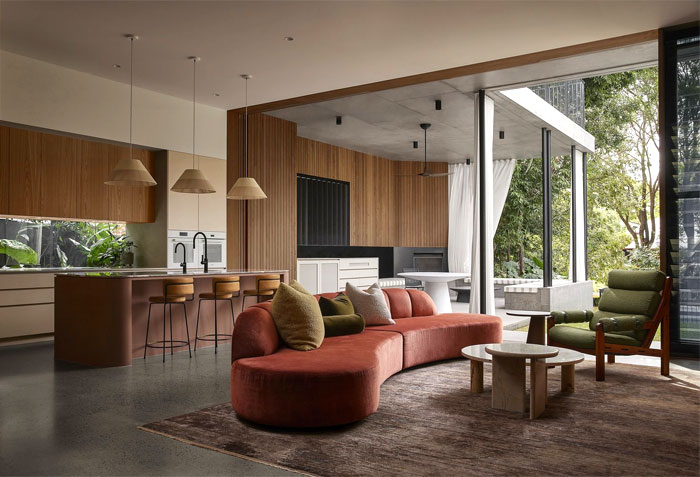
Sustainability is a driving force behind the latest trends in architecture. Modern designs must address environmental impacts and promote energy efficiency, ensuring that new developments contribute positively to the planet.
A. Energy-Efficient Design
Architects are increasingly incorporating energy-efficient strategies into building design. By minimizing energy consumption, buildings can reduce their environmental footprint and lower operating costs.
-
A.1. Passive Solar Design:
Designing buildings to maximize natural light and heat reduces the reliance on artificial lighting and heating. Thoughtful window placement, thermal mass, and strategic shading are vital components of passive solar design. -
A.2. Smart HVAC Systems:
Integrating smart heating, ventilation, and air conditioning systems optimizes energy usage while maintaining indoor comfort. Sensors and automated controls adjust temperatures based on occupancy and weather conditions. -
A.3. Renewable Energy Integration:
Incorporating solar, wind, and geothermal energy sources directly into building designs is becoming standard. Integrated renewable energy solutions help meet a significant portion of a building’s power needs.
B. Green Building Certifications
Environmental certifications, such as LEED (Leadership in Energy and Environmental Design) and BREEAM (Building Research Establishment Environmental Assessment Method), are critical indicators of a building’s sustainability. These certifications encourage architects to pursue innovative, eco-friendly design strategies.
-
B.1. LEED Standards:
LEED certification promotes environmentally responsible design and emphasizes energy efficiency, water conservation, and indoor environmental quality. -
B.2. BREEAM Accreditation:
BREEAM evaluates the lifecycle environmental performance of buildings and encourages design choices that minimize ecological impacts. -
B.3. WELL Building Certification:
Focusing on the health and well-being of occupants, WELL certification addresses factors such as air quality, lighting, and ergonomics to enhance overall building performance.
C. Urban Sustainability Initiatives
Large-scale urban sustainability initiatives drive collaboration between architects, city planners, and environmental experts. These programs aim to create greener, more resilient urban areas that can withstand the pressures of rapid growth and climate change.
-
C.1. Smart City Projects:
Urban developments that incorporate advanced technology and data analytics create efficient infrastructure, reduce congestion, and optimize resource distribution. -
C.2. Eco-District Planning:
Designing entire neighborhoods with sustainability in mind fosters community engagement and encourages shared renewable energy and waste management systems. -
C.3. Resilient Infrastructure:
Building infrastructure that adapts to changing environmental conditions is key. Sustainable drainage systems, flood-resistant designs, and climate-adaptive landscaping are all part of creating resilient urban environments.
Cultural Influences on Architectural Trends
Architecture is deeply intertwined with culture, history, and social dynamics. Emerging trends reflect a broader understanding of how buildings can embody cultural values and foster a sense of identity.
A. Global Fusion and Local Identity
Contemporary architecture often involves blending global design trends with local traditions. This fusion creates a unique identity that resonates with both modernity and cultural heritage.
-
A.1. Incorporating Traditional Elements:
Many architects integrate regional motifs, materials, and construction techniques to create buildings that honor local heritage while embracing modern design practices. -
A.2. Cultural Storytelling:
Architecture can serve as a visual narrative, telling the story of a community’s history, values, and aspirations. Thoughtfully designed public spaces, museums, and cultural centers play a key role in this narrative. -
A.3. Community Engagement:
Successful architectural projects increasingly involve local communities in the design process, ensuring that the final product reflects shared values and meets specific community needs.
B. Minimalism and Biophilic Design
The modern approach to architecture emphasizes simplicity, clarity, and a deep connection with nature. Minimalist design removes unnecessary elements, allowing the purity of form and function to stand out, while biophilic design integrates natural elements into the built environment.
-
B.1. Minimalist Aesthetics:
Clean lines, open spaces, and neutral color palettes are hallmarks of minimalist design. This approach emphasizes functionality and creates environments that are both serene and purposeful. -
B.2. Biophilic Integration:
Biophilic design incorporates natural elements such as indoor gardens, natural light, and organic materials. These features foster improved well-being, creativity, and productivity among occupants. -
B.3. Sustainable Material Choices:
Embracing natural materials and local resources minimizes the environmental footprint and creates a visual harmony between the building and its surroundings.
The Impact of Smart Cities and Digital Technologies
Smart cities and digital innovations are redefining how we interact with the urban environment. Architectural trends are increasingly aligned with the broader vision of creating cities that are efficient, interconnected, and responsive to the needs of residents.
A. Integrated Urban Technology
Modern buildings are designed to communicate with city infrastructure, feeding data into centralized management systems that govern traffic, energy distribution, and public safety.
-
A.1. Sensor Networks:
Sensors embedded throughout buildings and public spaces collect data on various parameters, allowing for real-time adjustments to improve efficiency. -
A.2. Digital Twins:
Virtual replicas of physical structures enable architects and city managers to simulate and optimize urban systems, predict maintenance needs, and plan future developments. -
A.3. Connectivity Platforms:
Robust digital networks ensure seamless integration of individual building systems into city-wide platforms, enhancing overall urban efficiency.
B. Augmented Reality in Urban Planning
AR technology is transforming urban planning by enabling architects to overlay digital models on real-world environments. This integration facilitates more accurate planning and community engagement.
-
B.1. Interactive Design Reviews:
Stakeholders can virtually interact with building models in their intended locations, leading to better-informed decision-making. -
B.2. Community Visualization:
AR applications allow local residents to visualize proposed changes, fostering community input and reducing resistance to urban developments. -
B.3. Real-Time Modifications:
With AR, architects can experiment with design changes on the fly and see how they affect the overall aesthetic and functionality of a space.
Future Directions: What’s Next in Architectural Design?
The future of architecture promises even more radical changes. New materials, smarter technologies, and global collaborations will drive forward-thinking design practices into the next decade and beyond.
A. Responsive and Adaptive Architecture
Future buildings are expected to become even more intelligent, responding dynamically to environmental conditions and human occupancy.
-
A.1. Self-Adjusting Facades:
Building exteriors that respond to weather conditions, adjusting their opacity or insulation in real time to optimize energy efficiency. -
A.2. Interactive Interior Spaces:
Interiors that change configuration based on occupant needs, with walls and furniture that are modular and reconfigurable. -
A.3. Automated Systems:
Enhanced automation will allow structures to maintain themselves, predicting maintenance needs and mitigating issues before they arise.
B. Eco-Urban Integration
The fusion of architecture with natural landscapes will continue to evolve, promoting a model where urban life and the environment are seamlessly connected.
-
B.1. Living Architecture:
Buildings that integrate vegetation into their design, such as green roofs, vertical gardens, and even structures grown using bio-engineered materials. -
B.2. Natural Material Innovation:
Further advances in material science will yield new biodegradable and regenerative materials that reduce waste and promote a sustainable lifecycle. -
B.3. Urban Agriculture:
Integrating community gardens and urban farms into building designs will not only provide fresh produce but also improve air quality and foster community interactions.
C. Global Collaborative Design
As the digital world transcends borders, architects are increasingly working on global projects that reflect a blend of diverse cultural influences and universal design principles.
-
C.1. Transnational Design Teams:
Collaborative projects spanning continents bring together a wealth of perspectives, driving innovation and creating designs that cater to a multicultural audience. -
C.2. Shared Resources and Knowledge:
Digital platforms make it possible to share research, design strategies, and technological advancements across different regions, fueling collective progress in sustainable architecture. -
C.3. International Standards:
Global efforts to standardize environmental and design practices will shape how buildings are designed, built, and certified, ultimately leading to more consistent and eco-friendly constructions worldwide.
The Role of Education and Research in Shaping Future Design

The advancements in architecture are closely tied to education and ongoing research. Educational institutions and research centers are at the forefront of exploring new theories, technologies, and sustainable practices that influence architectural trends.
A. Interdisciplinary Studies
Modern architectural programs are increasingly emphasizing the importance of interdisciplinary approaches that blend design, engineering, technology, and environmental science.
-
A.1. Cross-Disciplinary Collaboration:
Integrated curricula encourage collaboration between architects, engineers, and environmental scientists to produce innovative solutions for urban challenges. -
A.2. Focus on Sustainability:
Educational programs now include sustainability as a core component, ensuring that future architects are equipped to design eco-friendly and energy-efficient structures. -
A.3. Technological Proficiency:
Training in digital tools, simulation software, and smart building technologies prepares graduates to navigate the modern architectural landscape effectively.
B. Research and Innovation Hubs
Research institutions and think tanks play a crucial role in exploring emerging trends and developing new materials and technologies that can be applied in architecture.
-
B.1. Innovation Centers:
Facilities dedicated to exploring cutting-edge technologies provide architects with access to the latest tools and materials, driving innovation across the industry. -
B.2. Collaborative Projects:
Joint efforts between academia, industry, and government organizations lead to research initiatives that address current challenges, from climate change to urban congestion. -
B.3. Sustainability Labs:
Specially designed laboratories focus on creating and testing sustainable materials and building techniques, paving the way for environmentally friendly architectural practices.
Conclusion
Architectural design is undergoing a remarkable transformation, fueled by technological advances, sustainable practices, and an evolving cultural landscape. The future of architecture is defined by a shift towards intelligent, eco-friendly, and responsive designs that not only meet the functional needs of users but also promote environmental stewardship and community well-being.
From integrated digital systems and smart building materials to adaptive reuse of historic structures and groundbreaking urban planning, each trend discussed in this article represents a step towards a more innovative and sustainable future in architecture. As architects continue to experiment with new materials, embrace digital collaboration, and integrate technology into every aspect of design, the boundaries of what is possible will expand, creating a built environment that is both visionary and resilient.
The convergence of art, science, and technology is paving the way for a new era in design—one where architecture not only inspires but also adapts to the ever-changing demands of modern society. Whether you are an industry professional, a student of design, or simply an enthusiast looking to understand the future trends in architecture, the next decade promises to be an exciting time of innovation and transformation.

